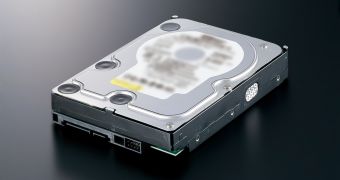Not so long ago there was little need for massive data storage, but then again, networks weren't that big, content, whether digital or otherwise, wasn't generally available, and many of the people didn't have desires such as downloading movies off the Internet. As the expansion of the Internet and of everything around it grew more and more, different needs started to appear, many of which people didn't have before, but they were soon made aware of them and, according to the "monkey see, monkey do" concept, we all had to take one big step into the digital age.
Options such as DVRs, STBs and other digital appliances have become available to the general public, and now everybody wants to record movies from HBO, everybody wants to download movies and music from the Internet, legally or not, and more. These things have spurred a new type of need, the one for larger storage capacity, where all those movies could fit. And, of course, the computer industry made haste in bringing the people what they wanted. Technologies such as Perpendicular Magnetic Recording, which was discovered years ago, became a subject of interest and soon the first hard drives using it appeared.
So companies such as Seagate and Hitachi quickly changed to the new technology, and products from both sides appeared. Now there is talk about the 1TB hard drive, many would buy such an item only because it says it has 1TB. One very important fact that is usually left aside it that the hard drive has a large capacity, but it's not that fast. Even Hitachi's 7K1000 model, the first 1TB hard drive in the world that is commercially available, has a 133.75MB/s maximum transfer rate, even with its 32MB of buffer memory.
That's not even close to the 300MB/s the Serial ATA interface supports, so the question shouldn't be of whether or not you want a 1TB hard drive, but of how fast should the hard drive be. In this case there are always the SCSI or SAS drives, but their price tag is way high, and doesn't actually fit the desktop requirements, which include a low price and fast data transfer rates. And by choosing a SCSI or SAS drive, you also require additional controllers, otherwise there's nothing you can do with them, besides a using them as paper weights.
So we now have very large hard drives, but they aren't fast enough, and we have fast drives, but they lack the capacity and cost more. Whether it's necessary or not isn't a choice that the home user can make on its own. Why? Because of the commercials you see on TV, telling you that you NEED such a device in order to get the best multimedia experience, when this propaganda is set before your eyes for long period of times, you eventually succomb to the temptation.

 14 DAY TRIAL //
14 DAY TRIAL //